‘Gro-Low’ fragrant sumac (
Rhus aromatica ‘Gro-Low’) is a low-growing shrub that can be used in both residential and commercial landscapes. This cultivar of the Midwest and native of the East tolerates dry soil and tough urban sites; its dark green, fragrant leaves turn bright orange or red in the fall.
With its spreading, prostrate form, this shrub can be used to great effect cascading over a retaining wall, on a residential or roadway boulevard, massed under a tree or along the foundation of a building. The clusters of red berries that develop in late summer are an excellent food source for birds throughout the winter.
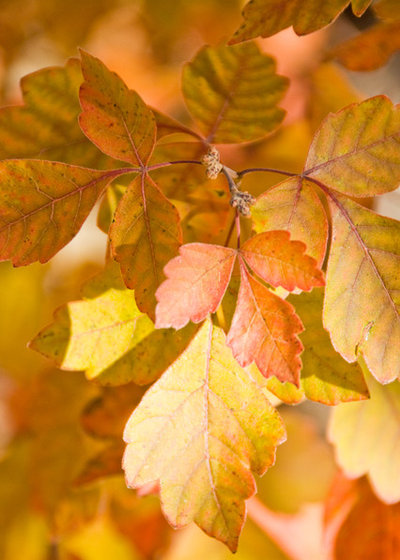
Holm Design & Consulting LLC
Botanical name: Rhus aromatica ‘Gro-Low’
Common name: ‘Gro-Low’ fragrant sumac
Origin: The upright species,
R. aromatica, which this prostrate cultivar is derived from, is native to eastern North America, from South Dakota southward to Texas, and eastward to New Hampshire in the north and Florida in the south; in Canada, it’s native from Ontario eastward to Quebec.
Where it will grow: Hardy to minus 25 degrees Fahrenheit, or minus 32 degrees Celsius (USDA zones 4b to 8b; find your zone)
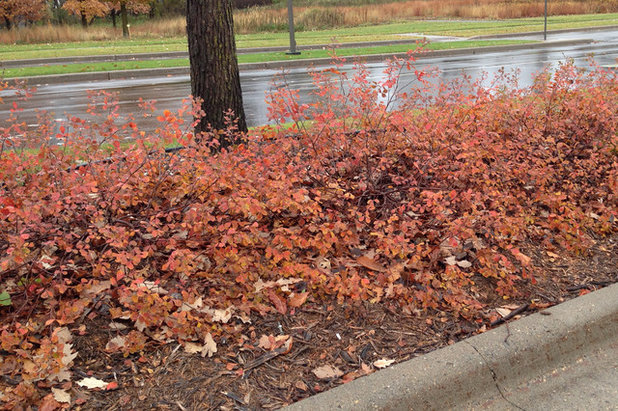
Holm Design & Consulting LLC
Typical plant communities: Medium to dry sites with well-drained soil
Soil requirement: Sandy loam to silt-loam
Light requirement: Full or partial sun
Mature size: 2 to 3 feet tall and 7 feet wide
Benefits and tolerances: Tolerates dry sites and tough urban sites, including parking lots and boulevards
Seasonal interest: Glossy, dark green three-leaved foliage turns orange to red in fall; clusters of lime green or yellow female flowers open in late April or May; clusters of dark red berries that are covered in fine hairs ripen in late August; prostrate, spreading form.
When to plant: Spring or fall (potted plants are available from most native-plant nurseries in regions where this shrub grows).
Shown: A mass planting with fall color on a parking lot island
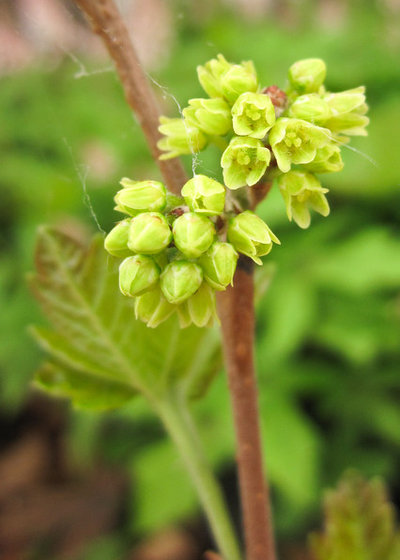
Holm Design & Consulting LLC
Distinguishing traits. The fragrant sumac cultivar ‘Gro-Low’ has a horizontal spreading form reaching over 7 feet wide. The dark green three-leaved foliage is glossy and fragrant; the leaves turn a brilliant orange to red in the fall. Clusters of red berries develop in late summer and attract a number of birds throughout the winter and into early spring.
How to use it. Plant it in full or partial sun in any well-drained site, including along a house foundation, cascading over a retaining wall, on a boulevard or massed under a tree.
Shown: Close-up of the female flowers
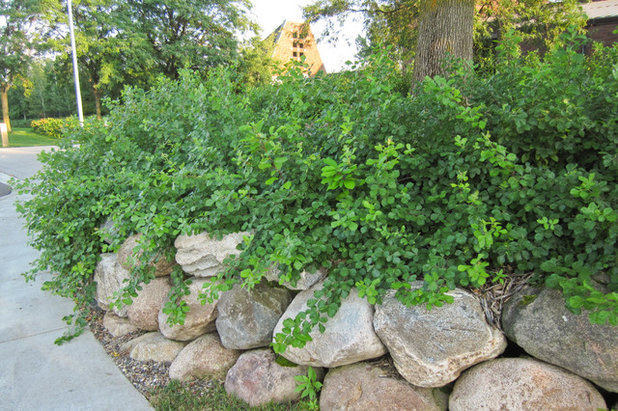
Holm Design & Consulting LLC
Planting notes. Fragrant sumac is a low-growing, prostrate shrub that spreads by root suckers. It is best planted in masses, to prevent it from growing into other neighboring plants. Space appropriately for your intended use: tighter spacing for a full, massed effect or more sparsely spaced for naturalizing. The lateral branches can be pruned to keep them from growing into neighboring plants.
The arrangement of the three leaves on this shrub can resemble poison ivy, so I would not recommend planting it near where poison ivy occurs, to avoid confusion.
Shown: A planting used under a large tree along a boulder retaining wall
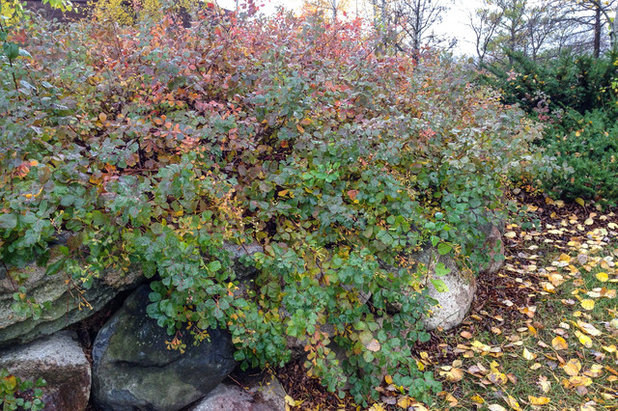
Holm Design & Consulting LLC
Shown: Early fall; the foliage is just beginning to change color
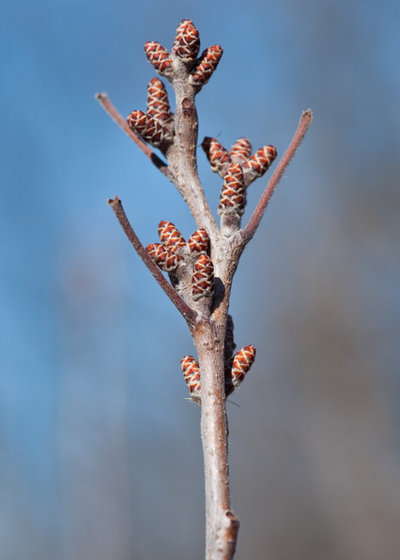
Holm Design & Consulting LLC
Pollinator notes. This shrub has separate male and female flowers that occur either together on the same plant or on separate plants. The presence of fruit would indicate that it’s female, and catkins that it’s male. The female flowers produce nectar and attract several pollinating insects, including bees and syrphid flies.
Shown: The male flowers (catkins) are attractive and provide interest in late fall and winter.





